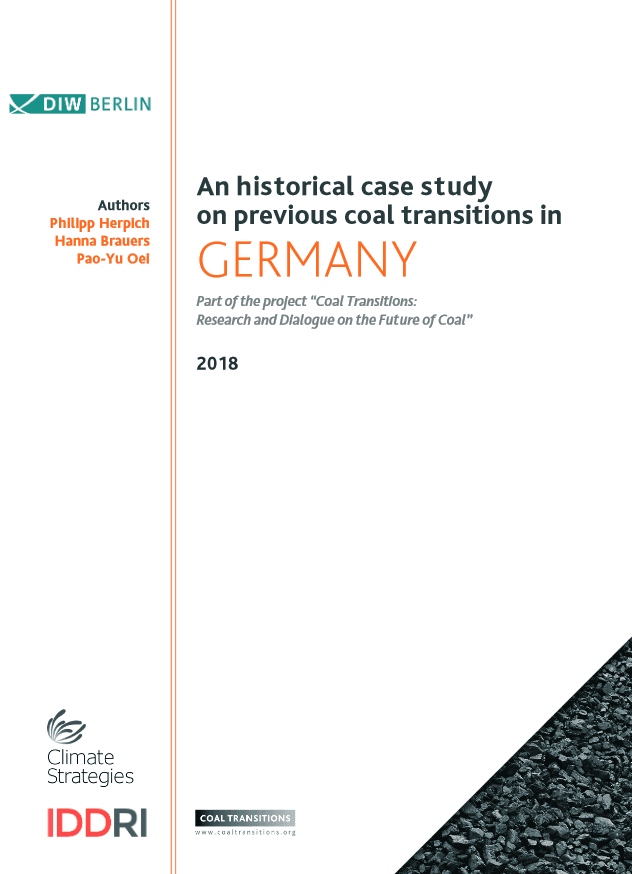An historical case study on previous coal transitions in GERMANY

Subsidies for German hard coal production will end in 2018, resulting in a final shutdown of domestic hard coal production. This paper looks back at the 60 years of steady decline and transition of an industry that once employed more than 700,000 people. One focus of this historic case study therefore lies on the Ruhr area—Germany ́s largest hard coal mining area that was hit by this economically driven transition. The second focus lies on the politically driven reduction of lignite production in Eastern Germany due to the reunification in 1990.
The analysis is hereby divided into the quantitative consideration of the significance of coal for the energy system and the regional economies, as well as an evaluation of implemented political instruments accompanying the reductions in the coal sector. The political instruments on regional, national and supranational level can be differentiated between measures for the conservation of coal production, the economic reorientation in the regions as well as easing negative social impacts.
Upcoming challenges for regions facing a coal phase-out in the future differ depending on various aspects e.g. the type of coal (lignite or hard coal), its usage (domestic or exported; electricity; heat; industry); regional characteristics (rural or urban); as well as the political and institutional situation (governance; ownership). This analysis of past transitions of mining areas and energy systems in Germany might, however, provide other countries and regions with valuable lessons of how to structure their upcoming coal phase-out period and therefore provides a useful addition to the existing literature.